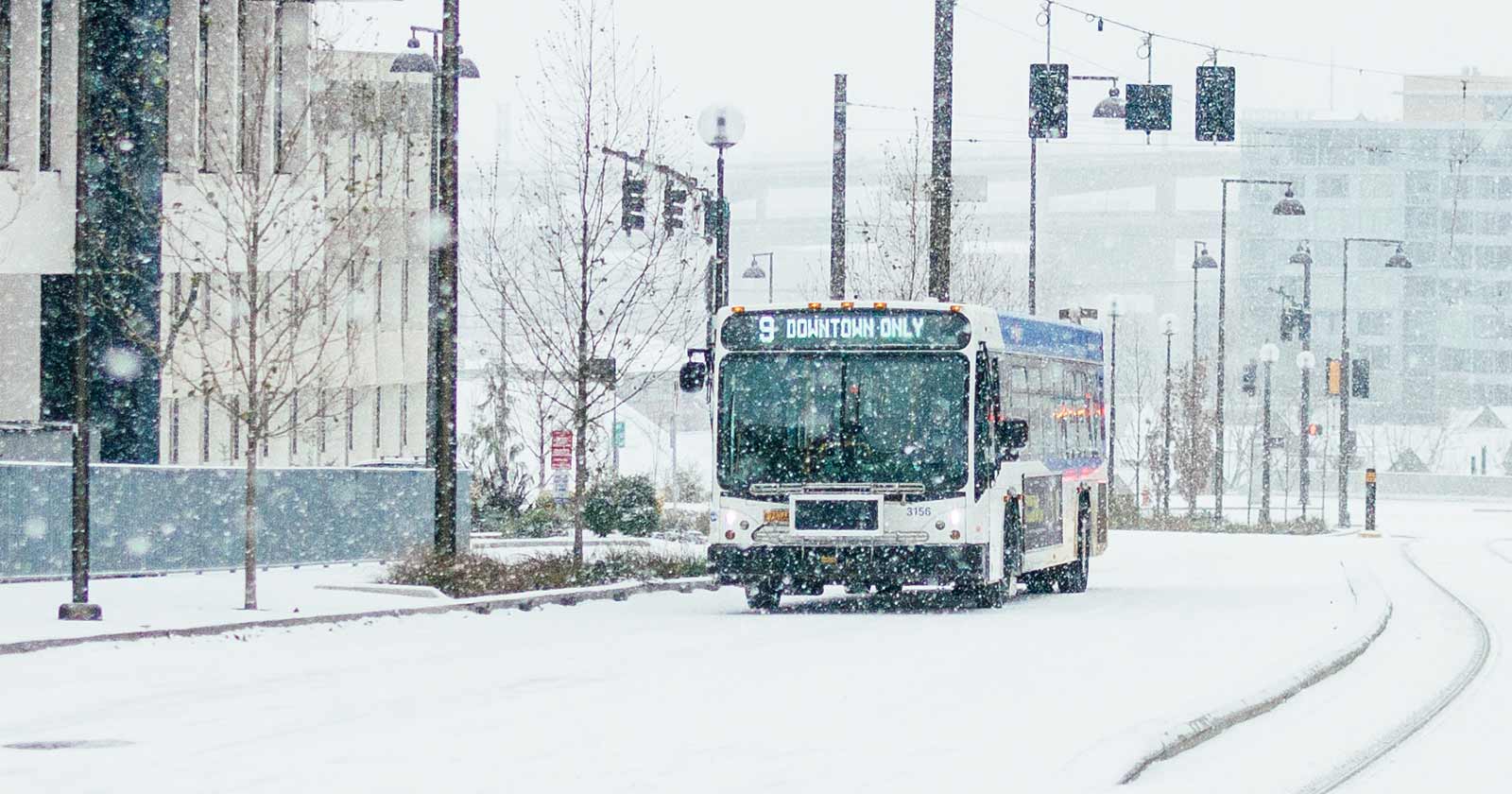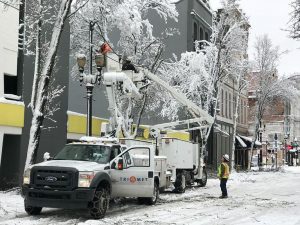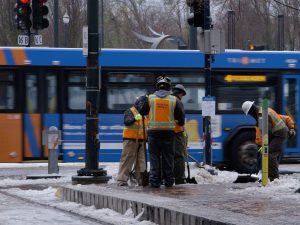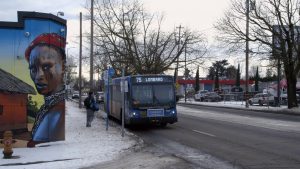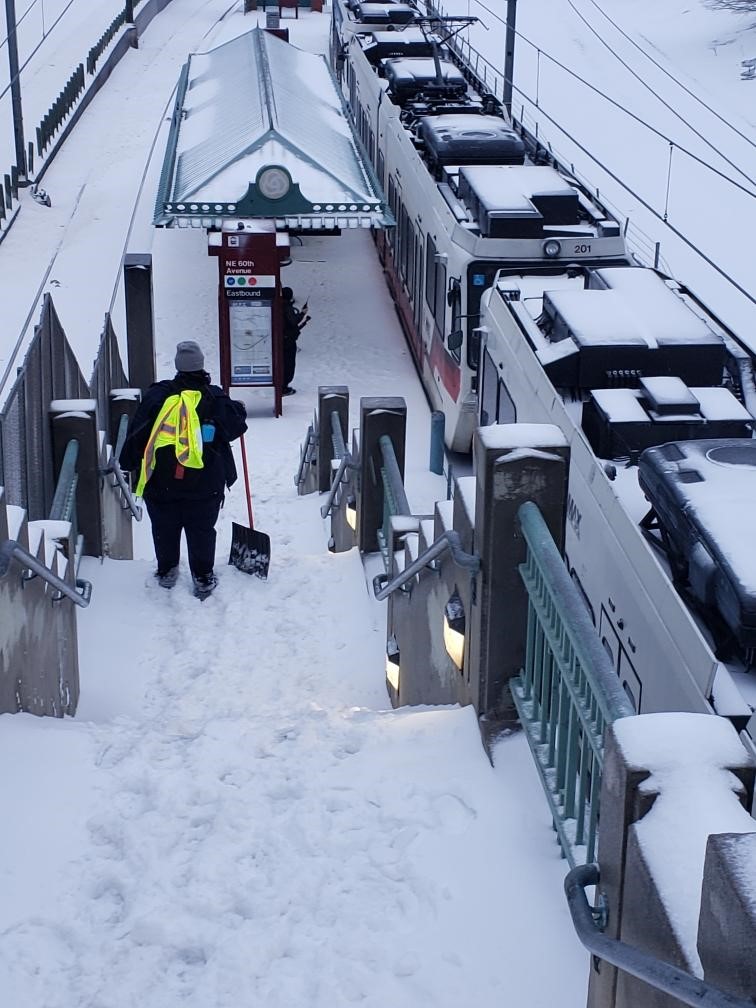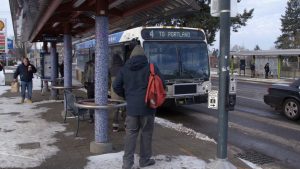This is a resource page for the media during a winter weather event. Members of the public should go to trimet.org/winterweather for riding tips.
This page provides the media insight into TriMet’s operations during inclement weather and provides tips to share with audiences about riding transit during snow and ice. Please point the public to trimet.org/winterweather for customer-facing advice and to trimet.org/alerts for service alerts.
Media should email the TriMet PIO team and call the TriMet media duty pager for additional information or to request an interview.
Safety over schedules
If conditions in an area are unsafe, roads are blocked or if power is affected, we will alter service to keep as many trains and buses running as possible, but service may take longer than usual.
TriMet plays a critical role keeping the region moving. During inclement weather, our most important principle is safety. We work diligently to get riders safely to their destinations. If it’s not safe for our operators, riders or equipment, TriMet will alter service. That may mean detouring buses, adjusting MAX service or canceling a line entirely.
Partnering to keep transit moving
TriMet partners with the Oregon Department of Transportation, the City of Portland and jurisdictions throughout the region to keep transit moving during a storm. TriMet works with these partners to prioritize the plowing, salting and sanding of our busiest routes.
TriMet managers and operations staff closely monitor weather reports as a storm moves in. We coordinate with local partners to keep the roads open so buses and trains can operate. We have employees working around the clock to chain buses, prepare equipment and check high-elevation routes to see if they’re safe for buses. TriMet even has a few of its own sanding trucks to augment the resources of our local and state transportation partners.
Emergency Operations Center and coordination
During major storms, TriMet activates our Emergency Operations Center. Additional staff work around the clock to provide safe operations and to communicate with our riders. TriMet also coordinates with city, county and state emergency managers to assess the status of the region’s roads and identify needed resources, including street plowing, sanding/salting and towing.
‶Snowbirds″
During a winter storm, TriMet crews will go out early in the morning to check bus routes in higher elevation areas. These “snowbirds,” as we call them, determine if it is safe to operate regular routes, or if any bus lines need to be adjusted. They coordinate with city crews for sanding/salting needs. They may also call for a TriMet sanding truck. TriMet has three sanding trucks — one assigned to each of our bus maintenance facilities. When necessary, we may bring in our own sanding trucks that may be used in key spots to keep buses moving.
Bus service
As storms approach and when it’s snowing, our crews mobilize to prepare our vehicles to provide safe service for our riders. When this happens, our facilities become very busy, with the focus being on making sure our vehicles are ready to operate in challenging conditions. We do not allow media to record chaining operations but will provide video and photos upon request. Contact the PIO to request a broadcast quality video showing how our buses are chained.
Buses face the same road conditions as other vehicles and operate more slowly in the snow. When it snows, we may chain some or all of our fleet, which limits their top speed to 25 mph and results in delays. And if it is not safe for our operators, riders or equipment, TriMet will alter service in an area.
Fast Facts
- The majority of TriMet’s buses, about 95% of our fleet, are equipped with automatic drop-down chains. The operator deploys the chains with a push of a button when extra traction is needed. These are the same type of chains used on many school buses. Drop-down chains are helpful in light snow and can give us time at the start of a storm to get our buses back to a safe location so crews can install the more heavy-duty chains, if necessary.(Contact PIO to request a copy of the video.)
- We set aside five sets of chains per bus for the winter season.
- Chaining takes place at each of TriMet’s three garages. It takes 10 minutes to chain a bus at the garage or 15 minutes in the field. It takes eight to 10 hours to chain the entire fleet. (Contact PIO to request a copy of the video.)
- Buses with chains can travel at a maximum of 25 mph, which means they will not be on schedule. Our focus during winter storms is on keeping buses moving safely.
- When roads are snowy or icy, bus operators will not pull the vehicle all the way over to the curb, to avoid getting stuck. Accommodations will be made to assist riders with mobility devices. See more Tips for Riders.
- Bus rescue teams are on standby and are deployed to get stuck buses moving again, repair or replace broken chains or chain buses in the field. TriMet also has on-call contracts with towing companies to assist further.
MAX service
MAX typically runs well in snow, though trains can be delayed because of stuck autos, debris or downed commercial power lines blocking the tracks. Freezing rain can cause problems if ice builds up on the overhead wires and trains cannot get power. People may notice some sparking near the connection between the train and the wire when there is ice on the wire. This is due to a slight break in the connection and does not pose any danger.
If severe conditions in an area are affecting roads and utilities, we will alter MAX service to keep trains running. This may mean added transfers and extra time for trips. Riders should plan extra time and dress for the conditions. Learn more about possible MAX adjustments during severe weather.
Fast Facts
- The MAX system has rail-switch covers, nearly half with heaters, to prevent snow and ice accumulation on the switches.
- Ice caps — hard plastic caps that cover a portion of the overhead wire — are used on nearly all MAX lines east of the Willamette River and at both rail yards.
- Up to 25 light rail vehicles have heated ice cutters installed that can shave approximately 1/32 inch of ice off of the power wire. The cutters are mounted on a second pantograph and can be raised and lowered as needed. (The pantograph is the arm that reaches from the top of the train to the overhead power line, to transfer electricity to the train.)
- If necessary, a few trains will run after normal operating hours on the entire 60-mile system to keep ice from accumulating on the overhead power line.
- The pantographs are also equipped with heating elements. These help prevent the build up of ice, which can otherwise weigh down the arms and keep them from extending all the way to the overhead wires.
- Our rail cleaning machines, which we use to remove leaves, sand and other debris from embedded trackways, can also help us clear packed snow and ice from rails in places like Downtown Portland and Gresham.
Platforms, transit centers, garages, parking lots
When snow and ice falls, TriMet crews will clear small paths on platforms, stairs and transit center sidewalks to help riders get safely to trains and buses. However, with more than 100 rail stations, it will take time for us to reach each one, and sometimes falling snow or freezing rain covers the paths they have cleared. Riders should use caution in slippery conditions both at TriMet facilities and making their way to and from stations and bus stops.
TriMet works with contractors to apply anti-icing crystals — Magnesium Chloride (MgCl2) — on walkways/stairs at MAX platforms, transit centers, park and rides and other places prone to ice buildup. It is the same product that the Portland Bureau of Transportation and other transportation agencies in the region use for roads and bridges. We continue to add to our stockpile of MgCl2, and we have about 68 tons of MgCl2 in storage and ready to be deployed.
Tips for Riders
During snow and ice, TriMet often sees riders who are new to the system. It is always important for riders to check trimet.org/alerts before they travel for alerts about service changes, and they should be prepared for walking and waiting in winter weather.
- Expect possible delays.
- Dress warmly and stay visible. For buses, wave to the operator, carry a small flashlight or strobe, or use your phone to help the operator spot you, but please do not shine it into the operator’s eyes.
- Expect that some windows may be open. Open windows help circulate fresh air, which is one way to reduce the transmission of COVID-19.
- Wait on flat ground. If your bus stop is on a hill, walk to the bottom or top as the bus won’t be able to stop on a slope.
- Stand on the curb until the bus comes to a complete stop. Buses will not pull to the curb to prevent getting stuck. You may have to step into the road to board. Accommodations will be made to assist riders with mobility devices.
- Check the status of a bus or train before you leave the house by visiting trimet.org/alerts.
- When snow and ice do fall, buses and trains may get so far off their normal schedules or route that TransitTracker can’t predict real-time arrivals accurately. Instead of an arrival countdown, we’ll show how far away the next vehicle is using “miles away”. Learn more about how TransitTracker works.
- TriMet’s Rider Support team provides live trip planning help between 7:30 a.m.-5:30 p.m. seven days a week by texting or calling 503-238-7433 and on Twitter at @trimethelp.

